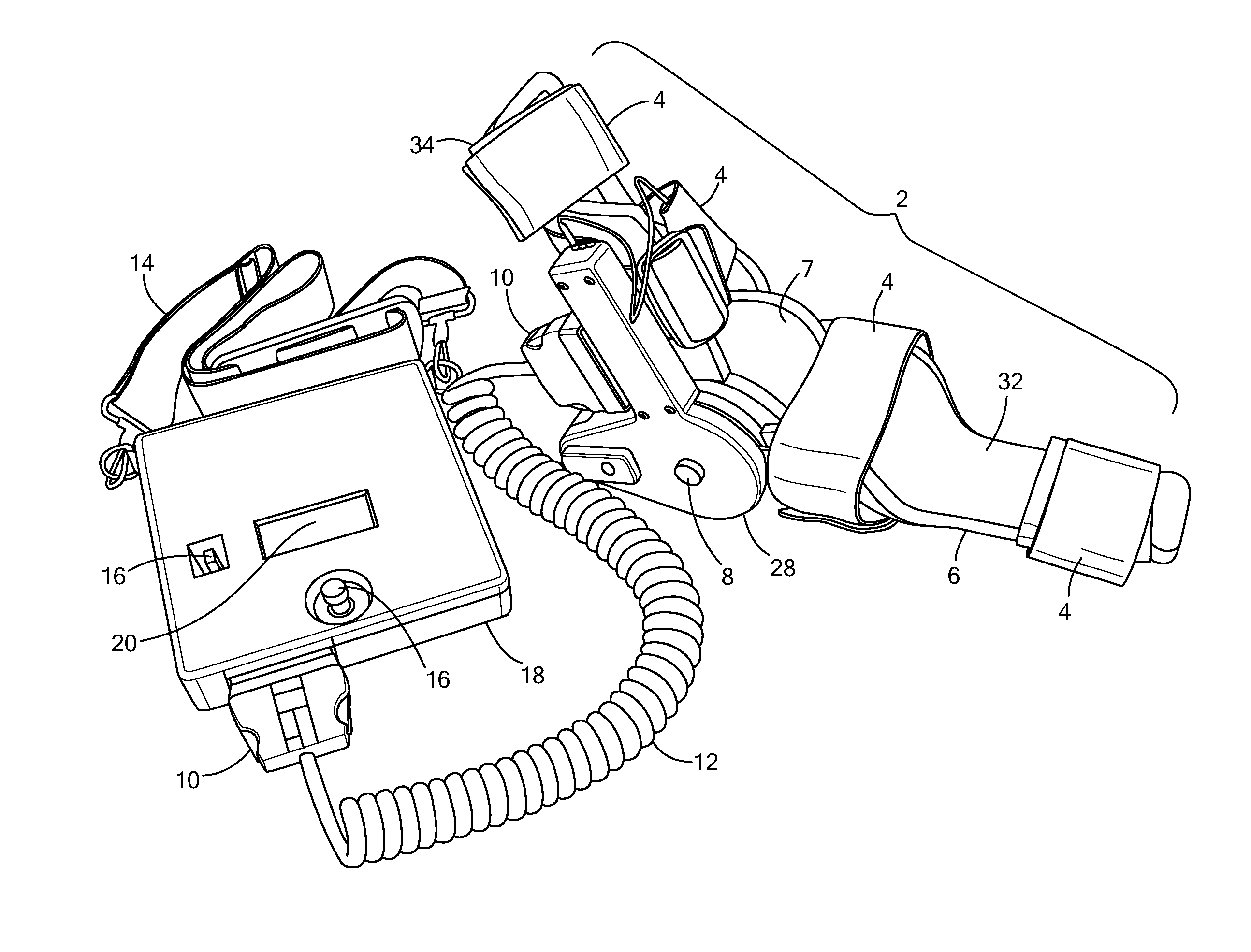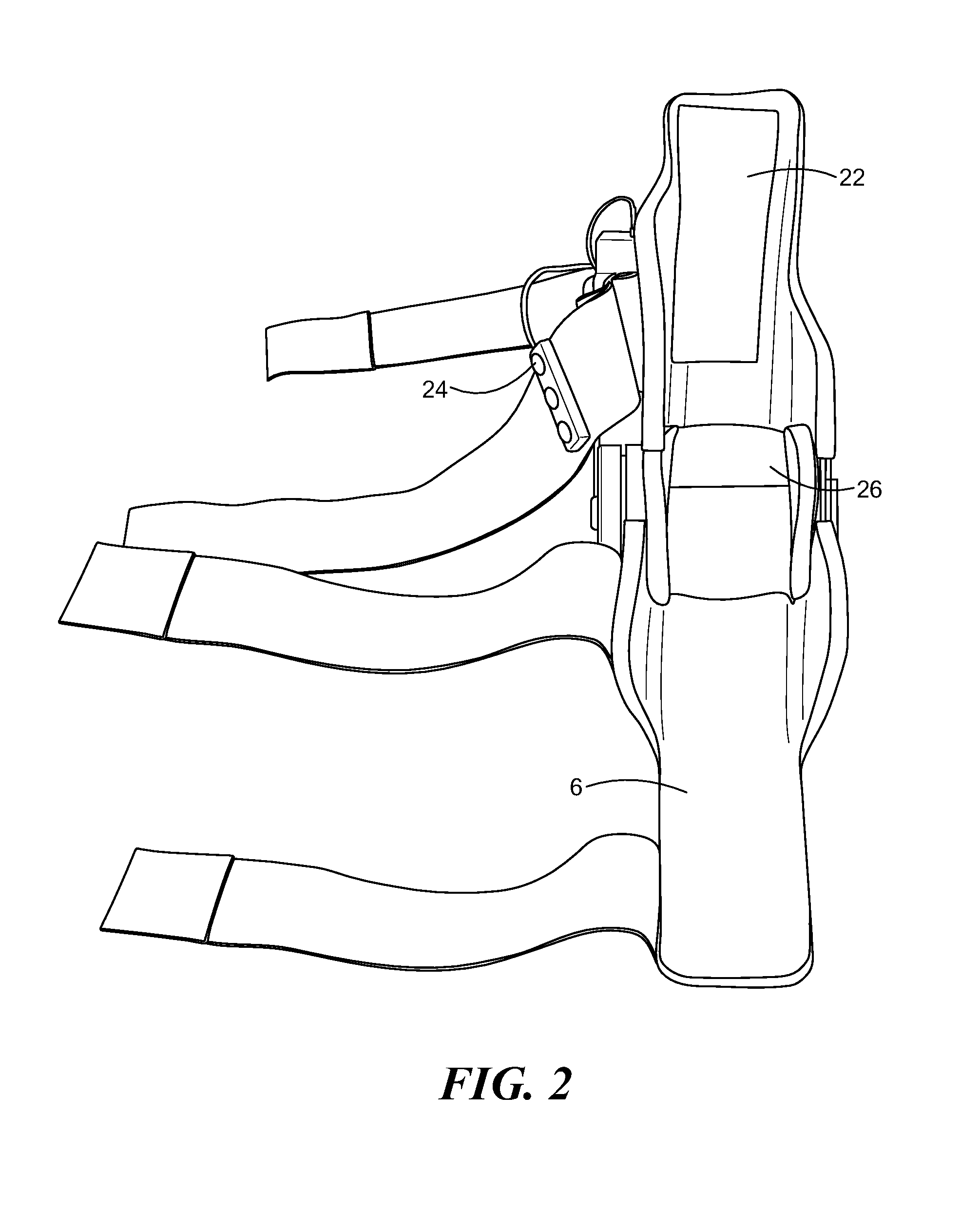Powered Orthotic Device and Method of Using Same
a technology of orthotics and powered devices, applied in the field of orthotics, can solve the problems of affecting the function of one or more limbs, affecting the ability of patients to perform constructive, functional rehabilitation exercises without assistance, and affecting the ability of patients to perform constructive, functional rehabilitation exercises. to achieve the effect of restoring at least partial function
- Summary
- Abstract
- Description
- Claims
- Application Information
AI Technical Summary
Benefits of technology
Problems solved by technology
Method used
Image
Examples
examples
[0120]An asymmetric EMG-controlled orthotic device in accordance with embodiments described herein was built and used in clinical trials on healthy individuals and on stroke survivors. The control algorithms proved effective in both enabling stroke survivors to control the device, and in promoting rehabilitation of the afflicted joint(s). FIGS. 31 and 32 are graphs showing rehabilitation progress of the subjects in the clinical trial, according to industry-standard rehabilitation scales (Fugl-Meyer and Ashworth).
[0121]Embodiments of an EMG-controlled orthotic device may be used in a variety of ways and with various protocols as a rehabilitation or functional aid. For example, rehabilitative exercise regimes may include the execution of familiar and / or functional tasks, or components thereof, to enhance the user's functional capacity. To this end, a subject's functional capabilities may be first assessed and classified into various levels without the device on. For example, three lev...
PUM
 Login to View More
Login to View More Abstract
Description
Claims
Application Information
 Login to View More
Login to View More - R&D
- Intellectual Property
- Life Sciences
- Materials
- Tech Scout
- Unparalleled Data Quality
- Higher Quality Content
- 60% Fewer Hallucinations
Browse by: Latest US Patents, China's latest patents, Technical Efficacy Thesaurus, Application Domain, Technology Topic, Popular Technical Reports.
© 2025 PatSnap. All rights reserved.Legal|Privacy policy|Modern Slavery Act Transparency Statement|Sitemap|About US| Contact US: help@patsnap.com



